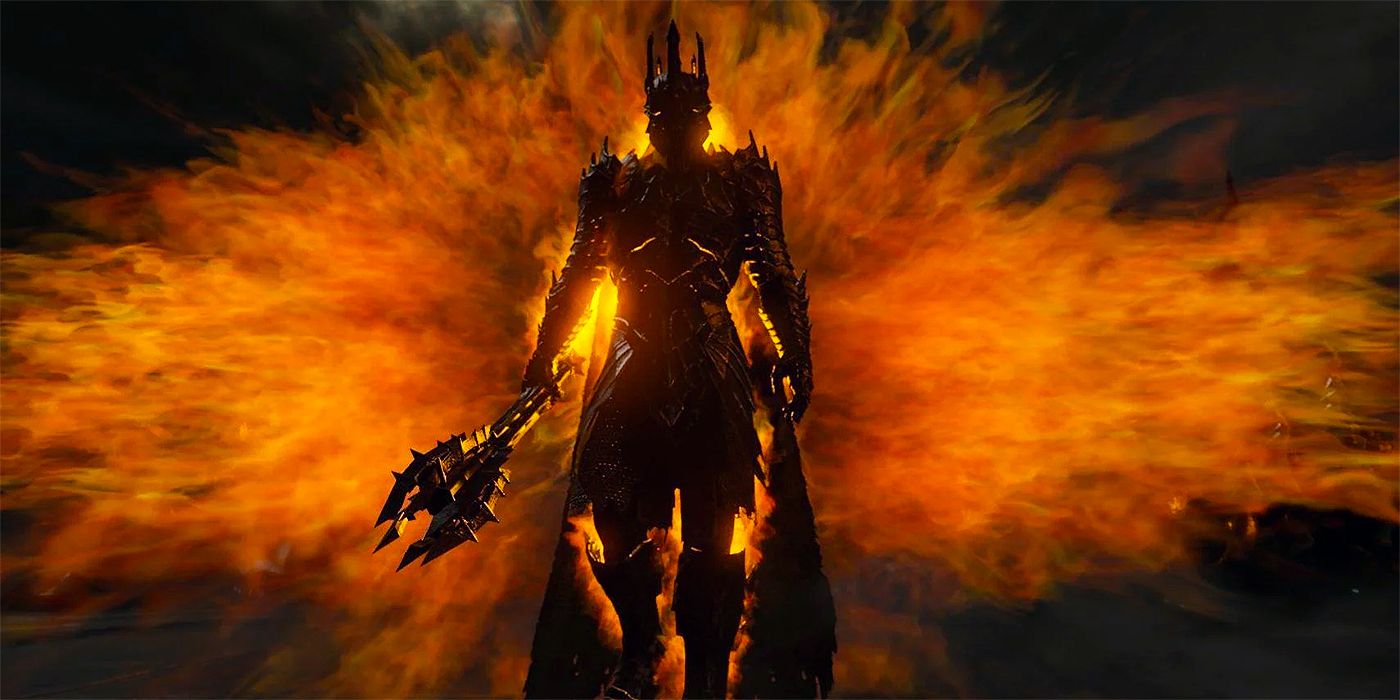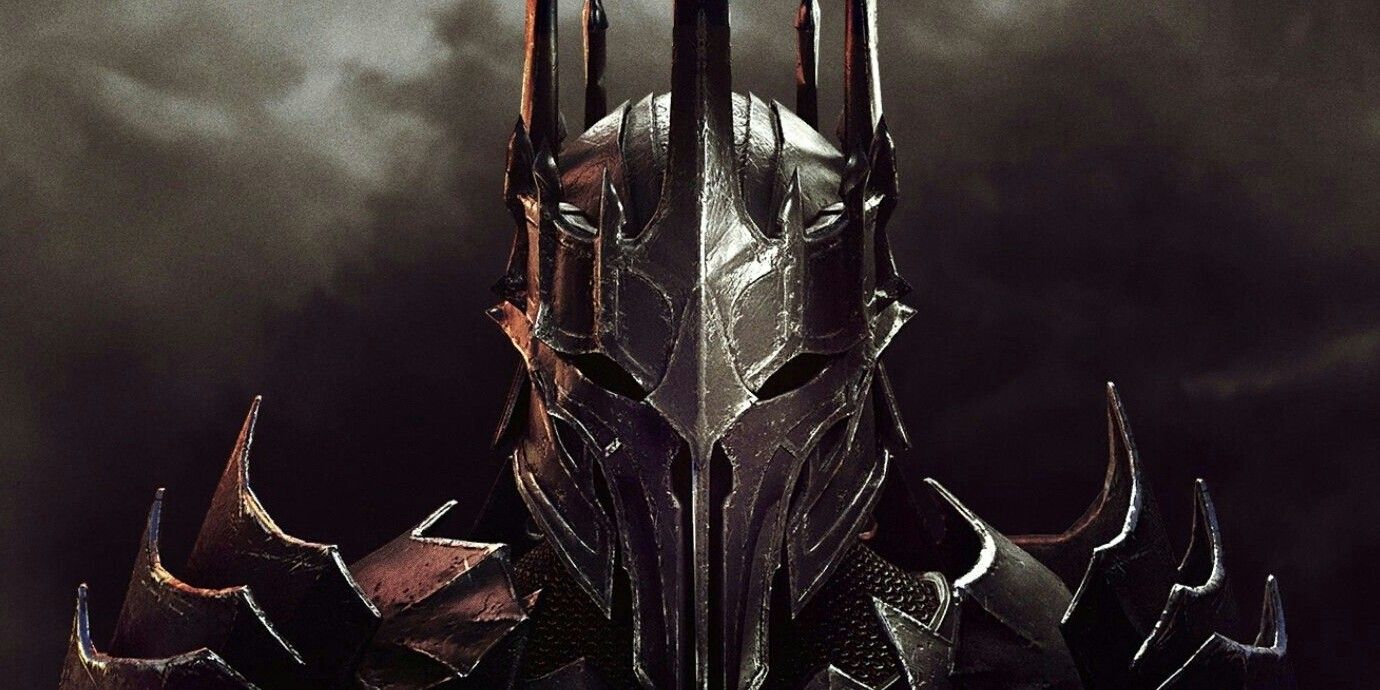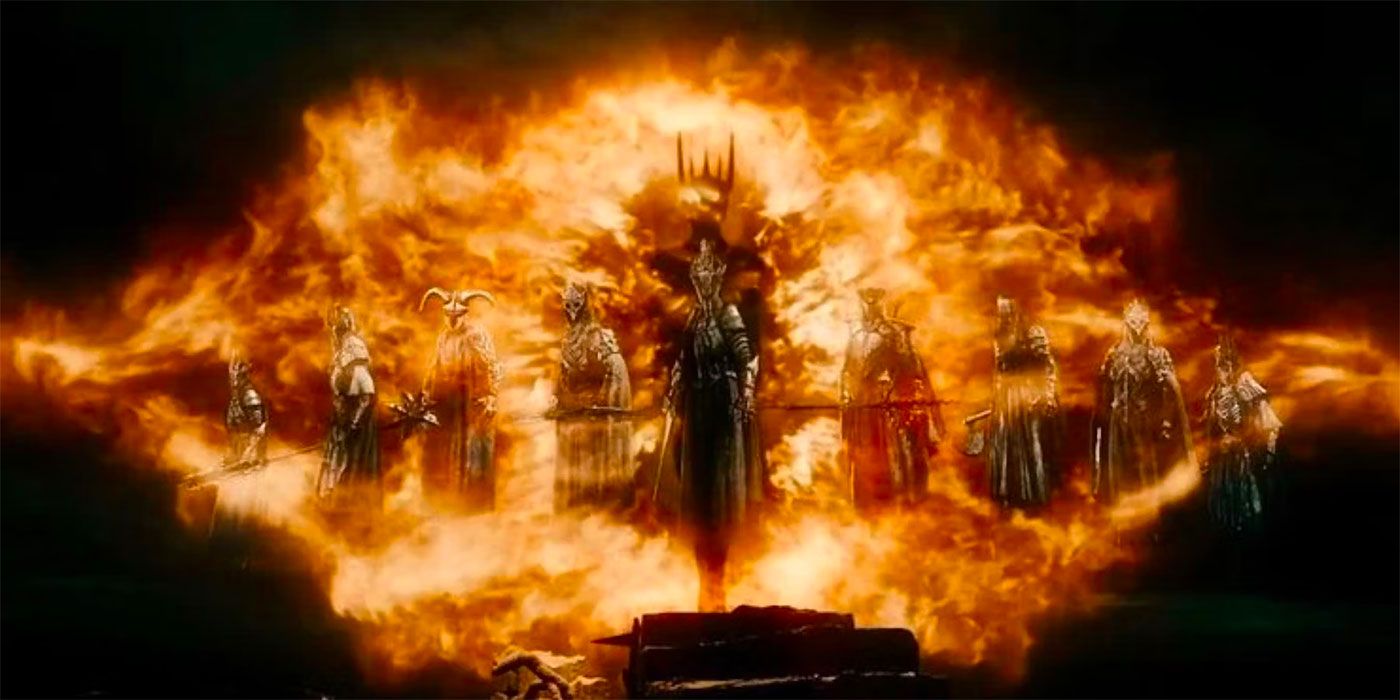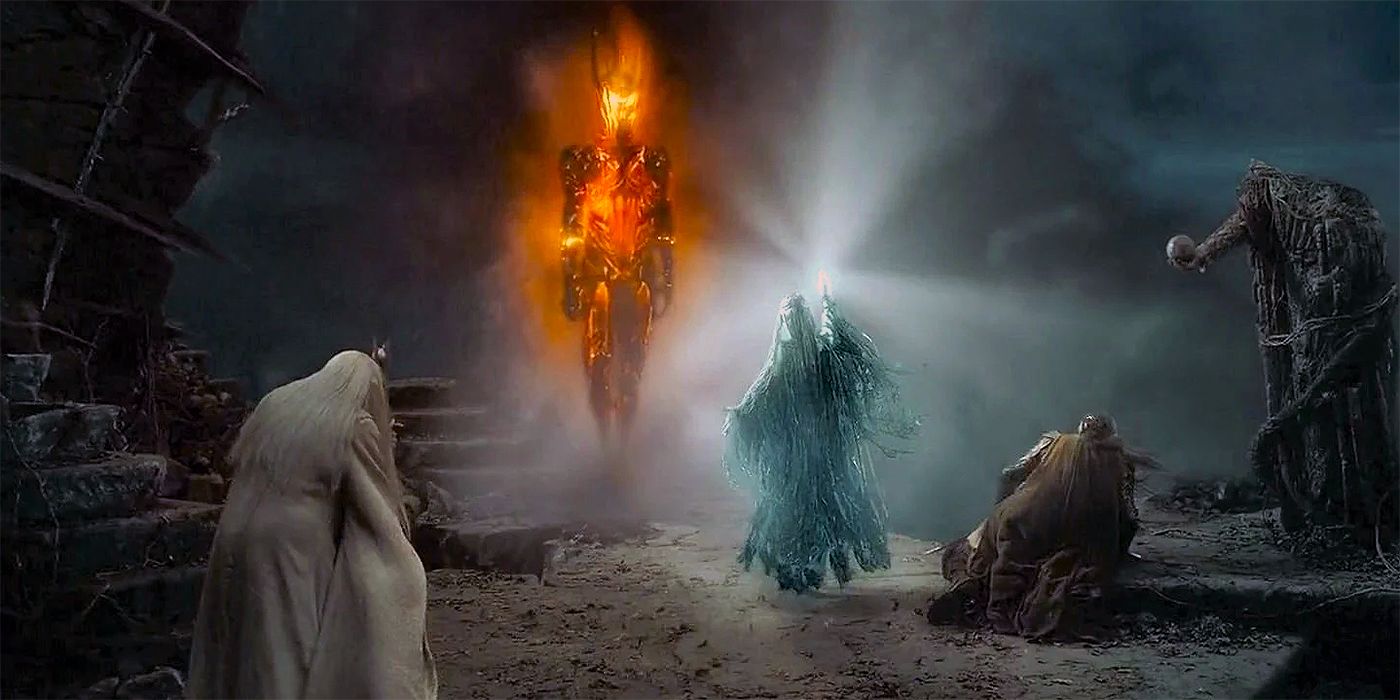In The Hobbit, Gandalf refers to a mysterious villain called the Necromancer, but he is actually Sauron from The Lord of the Rings. Although the two are not explicitly connected within the novels, they are linked through J. R. R. Tolkien's earlier writings.
Sauron’s backstory is long and complicated, and his time as the Necromancer is only a small part of that. However, it was crucial in his rise to power. During that time, Sauron became a dark sorcerer who haunted the abandoned fortress of Dol Guldur in Mirkwood, staying in the shadows so no one would discover his identity. He needed to remain undetected to rebuild his power. That, in turn, permitted him to play a larger role in the history of Middle-earth as The Lord of the Rings' iconic villain.
The Necromancer Is One of Sauron's Many Names
Originally, Sauron was Mairon “the admirable,” one of the most powerful Maia (essentially, angelic beings) and a student of Aulë the Smith. However, he chose to oppose the Valar and align himself with Melkor and his demons. After his master’s defeat in the War of Powers, Sauron was forgotten and allowed to remain in Middle-earth. Years later, he deceptively created the Rings of Power and began to conquer Middle-earth, but lost his physical form when Eru Ilúvatar, the creator of the Valar, drowned the island of Númenór.
Retreating to Mordor, Sauron was defeated by an alliance of Númenórean Men and Elves at the Battle of Dagorlad. During that battle, Isildur cut the One Ring from Sauron's hand and, in doing so, robbed him of the ability to manifest a physical form for a second time. Having lost the Ring, Sauron had almost no power and fled to rebuild in secret.
Here is where some confusion begins. In The Hobbit, Gandalf references a dark power called the Necromancer, but it is difficult to know exactly who he is talking about when looking only at that book and The Lord of the Rings. However, further exploration of lore proves the Necromancer was actually Sauron all along.
How Sauron Evolved Into the Necromancer From The Hobbit
The Hobbit was Tolkien’s first published story in this universe, so many people think that what happens in The Lord of the Rings was subsequently conceived. But in truth, Tolkien had invented a lot of his mythology before composing The Hobbit. However, that's not to say some characters didn't change over time. In some earlier writings of The Silmarillion and Beren and Lúthien, there is an evil character called Tevildo, the "Prince of Cats." In other early work, Tolkien tells of a sorcerer called Thû. "The Lay of Leithian," says Thû was "Morgoth's mightiest lord, Master of Wolves." The poem also calls Thû a "necromancer" who "held his hosts of phantoms and of wandering ghosts." These are more than likely early versions of what ultimately became Sauron.
In The Hobbit, Tolkien did not need to fully describe Sauron -- even if he was known by that name then -- because he wasn't part of that story. Instead, Tolkien, as he described in a letter to his publisher, used the Necromancer as a "presence (even on the borders) of the terrible." It was an indication that Bilbo was on the fringes of a much more dangerous world than he realized. Tolkien also hinted to his readers that The Hobbit was part of a much larger story where this evil is always present. The success he found with his first publication allowed Tolkien to develop his ideas for the Necromancer into the full backstory of Sauron and the Rings of Power in The Lord of the Rings.
Did Anyone Know the Necromancer Was Sauron?
The definition of necromancer is someone who communes with the dead. That could very well apply to Sauron because he created the Nazgûl, who, while not fully alive, are no longer dead either. Elrond proves they were dead at one point in Peter Jackson's The Hobbit: The Battle of the Five Armies when he yells they “should have stayed dead” when he and Saruman fought against the wraiths.
"The Lay of Leithian" refers to Thû (who becomes Sauron) as the Necromancer. However, there is no indication anyone was referring to that specific figure in The Hobbit. Tolkien was, of course, referencing his future villain.
In-universe, however, according to J.E.A. Tyler’s The Tolkien Companion, for 2,000 years at the beginning of the Third Age, Dol Guldur "was the most feared place in Middle-earth save only Mordor itself" because of the dark magic that resided there. Thus, “Necromancer” is what other people called the evil presence in the fortress that was causing fear and the corruption of the Greenwood. In this case, the “Necromancer” is likely a general reference to a "worker of black magic."
There is also the fact that even the White Council didn't know the Necromancer was Sauron. Because they believed the Necromancer was only a sorcerer, they couldn't see what was right in front of them. Even after Radagast was attacked in Dol Guldur by one of the Nine in The Hobbit: The Battle of the Five Armies, he didn't figure it out. He was confused and told Gandalf, "It cannot be the Necromancer. A human sorcerer could not summon such evil."
Finally, Gandalf understood and said, "We have been blind, Radagast, and in our blindness, the Enemy has returned." Sauron’s secrecy allowed him to endure after the Last Alliance in the Second Age. His deception as the Necromancer kept him hidden so he could rebuild his power once again to claim dominion over Middle-earth.




